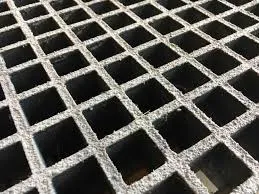
-
 Afrikaans
Afrikaans -
 Albanian
Albanian -
 Amharic
Amharic -
 Arabic
Arabic -
 Armenian
Armenian -
 Azerbaijani
Azerbaijani -
 Basque
Basque -
 Belarusian
Belarusian -
 Bengali
Bengali -
 Bosnian
Bosnian -
 Bulgarian
Bulgarian -
 Catalan
Catalan -
 Cebuano
Cebuano -
 China
China -
 China (Taiwan)
China (Taiwan) -
 Corsican
Corsican -
 Croatian
Croatian -
 Czech
Czech -
 Danish
Danish -
 Dutch
Dutch -
 English
English -
 Esperanto
Esperanto -
 Estonian
Estonian -
 Finnish
Finnish -
 French
French -
 Frisian
Frisian -
 Galician
Galician -
 Georgian
Georgian -
 German
German -
 Greek
Greek -
 Gujarati
Gujarati -
 Haitian Creole
Haitian Creole -
 hausa
hausa -
 hawaiian
hawaiian -
 Hebrew
Hebrew -
 Hindi
Hindi -
 Miao
Miao -
 Hungarian
Hungarian -
 Icelandic
Icelandic -
 igbo
igbo -
 Indonesian
Indonesian -
 irish
irish -
 Italian
Italian -
 Japanese
Japanese -
 Javanese
Javanese -
 Kannada
Kannada -
 kazakh
kazakh -
 Khmer
Khmer -
 Rwandese
Rwandese -
 Korean
Korean -
 Kurdish
Kurdish -
 Kyrgyz
Kyrgyz -
 Lao
Lao -
 Latin
Latin -
 Latvian
Latvian -
 Lithuanian
Lithuanian -
 Luxembourgish
Luxembourgish -
 Macedonian
Macedonian -
 Malgashi
Malgashi -
 Malay
Malay -
 Malayalam
Malayalam -
 Maltese
Maltese -
 Maori
Maori -
 Marathi
Marathi -
 Mongolian
Mongolian -
 Myanmar
Myanmar -
 Nepali
Nepali -
 Norwegian
Norwegian -
 Norwegian
Norwegian -
 Occitan
Occitan -
 Pashto
Pashto -
 Persian
Persian -
 Polish
Polish -
 Portuguese
Portuguese -
 Punjabi
Punjabi -
 Romanian
Romanian -
 Russian
Russian -
 Samoan
Samoan -
 Scottish Gaelic
Scottish Gaelic -
 Serbian
Serbian -
 Sesotho
Sesotho -
 Shona
Shona -
 Sindhi
Sindhi -
 Sinhala
Sinhala -
 Slovak
Slovak -
 Slovenian
Slovenian -
 Somali
Somali -
 Spanish
Spanish -
 Sundanese
Sundanese -
 Swahili
Swahili -
 Swedish
Swedish -
 Tagalog
Tagalog -
 Tajik
Tajik -
 Tamil
Tamil -
 Tatar
Tatar -
 Telugu
Telugu -
 Thai
Thai -
 Turkish
Turkish -
 Turkmen
Turkmen -
 Ukrainian
Ukrainian -
 Urdu
Urdu -
 Uighur
Uighur -
 Uzbek
Uzbek -
 Vietnamese
Vietnamese -
 Welsh
Welsh -
 Bantu
Bantu -
 Yiddish
Yiddish -
 Yoruba
Yoruba -
 Zulu
Zulu
Feb . 12, 2025 00:01
Back to list
chemical products for frp applications a comprehensive guide ...
Innovations in chemical products for FRP applications have led to tremendous advancements in diverse industries including automotive, aerospace, and construction. As Fiber Reinforced Polymers (FRP) continue to gain momentum for their unrivaled strength-to-weight ratio and durability, selecting the appropriate chemical products becomes essential for enhancing performance and ensuring sustainability. This guide provides an in-depth exploration of the key chemical products that are pivotal in FRP applications, offering insights based on extensive experience, professional expertise, authoritative observations, and trustworthy practices.
Reinforcement materials dictate the load-bearing capabilities of FRP structures. While glass fibers remain the most commonly used due to their balance of strength, weight, and cost, carbon fibers are favored in high-end applications for their superior modulus and tensile strength. An industry expert will attest to the importance of selecting the right weave and design architecture, such as woven roving or unidirectional tapes, to align with the specific mechanical requirements and load paths of the final product. With sustainability in focus, natural fibers like flax and hemp are gaining traction as eco-friendly alternatives, offering adequate mechanical properties while being biodegradable. Adhesives and bonding agents are critical in ensuring structural integrity, especially in large-scale constructions and repairs in FRP applications. Advanced adhesives like polyurethane and acrylic-based formulations are preferred for their durable bond strength and flexibility, allowing for the absorption of vibrational forces without delamination. The latest innovations in adhesive chemistry focus on reducing cure times and increasing operational temperatures, further broadening the application capabilities of FRP composites. The progression of FRP composites continues to redefine how industries approach structural design, requiring a fusion of traditional expertise and cutting-edge innovation. The successful implementation of chemical products in FRP applications hinges on a comprehensive understanding of material interactions and lifecycle considerations. As environmental regulations tighten, future advancements are expected to pivot towards greener chemistries that maintain performance standards while reducing ecological footprints. By leveraging the insights provided in this comprehensive guide, stakeholders can optimize their FRP solutions for the demands of tomorrow while ensuring they adhere to the highest standards of reliability and trust.


Reinforcement materials dictate the load-bearing capabilities of FRP structures. While glass fibers remain the most commonly used due to their balance of strength, weight, and cost, carbon fibers are favored in high-end applications for their superior modulus and tensile strength. An industry expert will attest to the importance of selecting the right weave and design architecture, such as woven roving or unidirectional tapes, to align with the specific mechanical requirements and load paths of the final product. With sustainability in focus, natural fibers like flax and hemp are gaining traction as eco-friendly alternatives, offering adequate mechanical properties while being biodegradable. Adhesives and bonding agents are critical in ensuring structural integrity, especially in large-scale constructions and repairs in FRP applications. Advanced adhesives like polyurethane and acrylic-based formulations are preferred for their durable bond strength and flexibility, allowing for the absorption of vibrational forces without delamination. The latest innovations in adhesive chemistry focus on reducing cure times and increasing operational temperatures, further broadening the application capabilities of FRP composites. The progression of FRP composites continues to redefine how industries approach structural design, requiring a fusion of traditional expertise and cutting-edge innovation. The successful implementation of chemical products in FRP applications hinges on a comprehensive understanding of material interactions and lifecycle considerations. As environmental regulations tighten, future advancements are expected to pivot towards greener chemistries that maintain performance standards while reducing ecological footprints. By leveraging the insights provided in this comprehensive guide, stakeholders can optimize their FRP solutions for the demands of tomorrow while ensuring they adhere to the highest standards of reliability and trust.
Related Products









